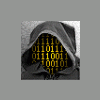After startup, hourgalss flickers every 10-15 seconds - very annoying-. Via opening task manager, have found culprit as svchost LOCAL SERVICE, where spikes are associated with CPU usage of 5-25%.
After I right click on svcost LOCAL SERVICE and end the process (despite the warning that doing so may make things unstable), this is resolved. I do not notice any problems thereafter, all seems to function well.
However, after any startup this problemrecurs, again resoved by manully ending the svchost LOCAL SERVICE process.
I would like to have this end permanently, without manually having to end process
Have Mcafee virus scan up to date, run Adaware and Spybot, defragmented, scanned disk.
Would appreciate any help.
Note: I am a novice, need step by step instructions















 Sign In
Sign In Create Account
Create Account

